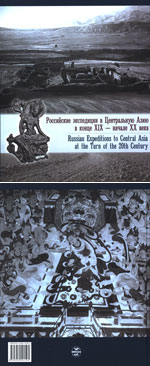|
|
| |

|

|
Rong Xin-jiang. Russian Expeditions and the Chinese Authorities in the Late 19th and Early 20th Centuries // Russian Expeditions to Central Asia at the Turn of the 20th Century / Collected articles. Edited by I.F. Popova. St Petersburg, Slavia Publishers, 2008. P. 219-227.
Vast territories of Central Asia, which were referred to as Eastern or Chinese Turkestan in the Western tradition of the 19th and early 20th centuries, used to be called Xi yu (Western Regions) in Chinese historical records beginningfrom
the times of the Han Dynasty (206 B.C.—220 A.D.).
Over thousands of years numerous civilizations superseding
one another existed in the region, differing in languages, ethnic
composition and religions. The Silk Road, a transcontinental
trade route from China via Central Asia and further through
Asia Minor into Europe went across the oases of Khotan, Shule
(Kashgar), Kucha, Yanqi (Karashar), Loulan and Gaochang
(Turfan), sparsely scattered in the desert. The oases states were
not only important economic centres of the northern and southern
routes of the Silk Road — through them the Western cultural
influence penetrated into Eastern Asia and, conversely,
Chinese culture found its way to the West. A whimsical combination
of various ethnic and religious components made each
of the states a unique phenomenon...
[To the edition - Russian Expeditions to Central Asia at the Turn of the 20th Century] PDF-files PDF-files
The entire paper
Keywords
|
|
|
|
Random news: Announcements |
|
The next Far Eastern Studies Seminar LXI of the Department of Far Eastern Studies (IOM RAS) will be held on February 5, 2024, at 15:00. Vasily V. Shchepkin, Senior Researcher at the IOM RAS, will give a talk titled “Sendai and Russia: invisible ties (based on a recent research visit to the University of Tohoku, Japan).” |
|
Read more...
|
|
|
|
|

